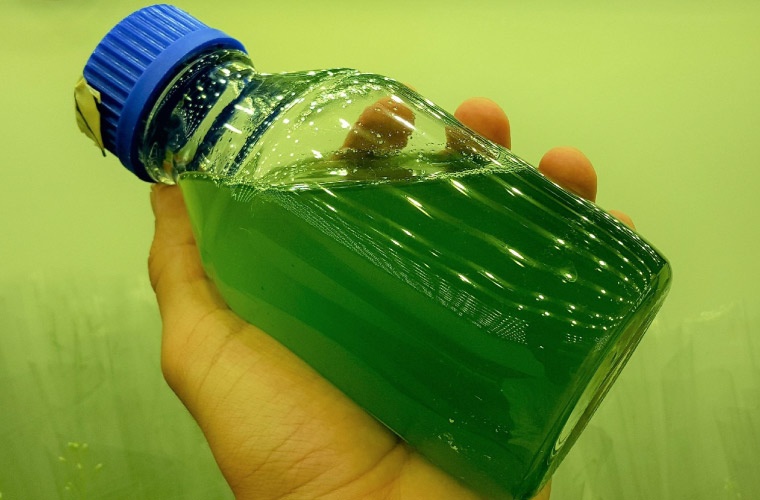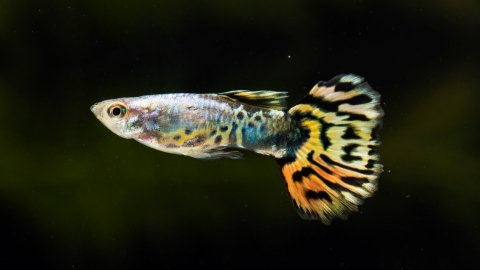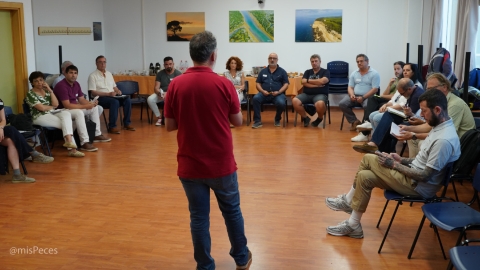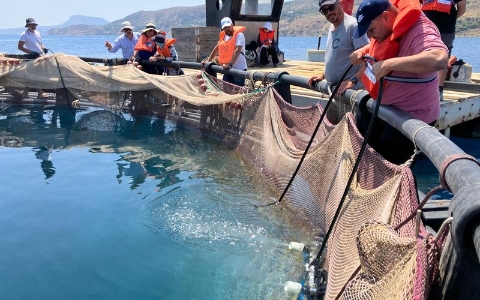
Aquaculture science is in constant pursuit of innovative solutions that can support the projected growth over the coming decades, while adhering to principles of sustainability and food security. Among the key challenges facing the sector is the need to address the emerging threats posed by climate change and the rising incidence of disease outbreaks, which are causing significant economic losses.
One of the most promising, imaginative and sustainable alternatives lies in the use of microalgae as platforms for producing and delivering oral vaccines for fish and other aquatic species.
Researchers from the South China University of Technology and Imperial College London explore this topic in a recent article published in Trends in Biotechnology, focusing on the genetic engineering of microalgae such as Chlamydomonas reinhardtii and Chlorella vulgaris to express specific antigens that function as vaccines. Once incorporated into the animal’s diet, the microalgae not only act as carriers for the antigens but also exert an immunodulatory effect, thanks to their naturally occurring bioactive compounds.
A major advantage of this approach is its sustainability. Unlike traditional vaccine production systems based on bacteria, yeast, or mammalian cells, cultivating microalgae does not require energy-intensive infrastructure and instead relies on photosynthesis as its primary energy source. Furthermore, microalgae can be grown in either open or closed system with a low risk of external contamination, and their biodegradable nature minimises environmental impact during both production and application.
The immunological benefits are equally noteworthy. Studies cited in the article reveal that the use of microalgae-based vaccines has significantly increased the survival rates of species such as shrimp and grouper against viruses like white spot syndrome and viral nervous necrosis, with survival improvements of up to 80%. “As vaccine carriers, microalgae not only boost the immune response of aquatic animals, but also offer an efficient and less stressful method of controlling aquatic pathogens,” the authors note.
The rational design of antigens, underpinned by artificial intelligence tools such as AlphaFold and Rosetta, enables the development of more effective and targeted vaccines. This strategy facilitates multivalent antigen presentation and compatibility with adjuvants, enhancing protection against multiple pathogens. In addition, techniques such as coating microalgae with alginate or chitosan can further reinforce antigen stability and ensure its release at key sites, such as the gut-associated lymphoid tissue.
Despite their potential, the authors caution that several hurdles remain. These include improving the genetic stability of modified microalgae, developing scalable bioreactors, and gaining a deeper understanding of fish immune responses to microalgae-derived vaccines. Addressing regulatory challenges around the use of genetically modified organisms in aquaculture will also be crucial.
Nonetheless, the convergence of synthetic biology, artificial intelligence and immunology points towards a highly promising future of these vaccines. “We expect that advances in synthetic biology and fish immune metabolism will drive innovation in microalgae-based vaccines,” the authors conclude-heralding a technology that could transform how aquaculture tackles health challenges in the 21st century.



